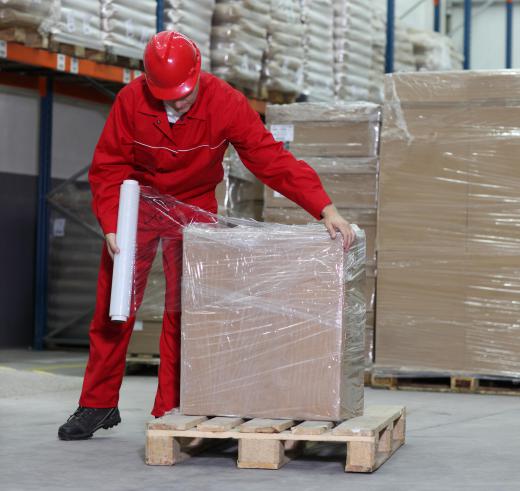Shrinkwrapping is the process of covering a product with clear plastic that shrinks when heated to fit tightly around the shape of the product. Shrinkwrapping, or shrinkwrap, is also the term used for the plastic used in this process.
Shrinkwrapping plastic can shrink to fifty percent of its original size, so it can be cut quite loosely. It can be purchased in large rolls or a variety of precut sizes. Small uniform items such as CDs can be slipped into shrinkwrap bags that are already sealed on three sides. The open side is sealed and the entire package heated so that the bag shrinks to an exact fit.

Shrinkwrapping equipment can be expensive for manufacturing applications, or relatively affordable for home and hobby use. Shrinkwrapping cutters are fairly major purchases. They are similar to paper cutters, but the blade is replaced with a heated wire. Bringing the cutter down on a folded-over piece of shrinkwrap puts the wire in contact with the material, cutting, heating and sealing the wrap.
Shrinkwrapping roll comes in a wide range of widths. Typically the shrinkwrap is folded over once before being rolled onto cardboard cylinders. This makes it easy to shrinkwrap in quantity -- the material is pulled through a cutter, the item is slipped between the two layers of wrap, and then the cutter slices the material off the roll and seals it. The item can be turned 90 degrees and trimmed on the other edges before using the heating element for shrinking.
For rapid shrinking, manufacturers use a heating chamber; these come in a variety of sizes and degrees of automation. For home or hobby use, a heat gun or even a hairdryer can be used. If using a heat gun, you must be careful to keep the heat source moving. It is quite easy to burn a hole through the shrinkwrapping by lingering too long on one spot.
Manufacturers and hobbyists alike turn to shrinkwrapping to protect and display their goods. A shrinkwrapped item in a store will remain clean no matter how many people pick it up and examine it, yet the item within remains fully visible. Shrinkwrapping also offers a psychological benefit to the consumer, creating an 'untouched by human hands' appearance that makes your goods look 'factory-fresh.'
